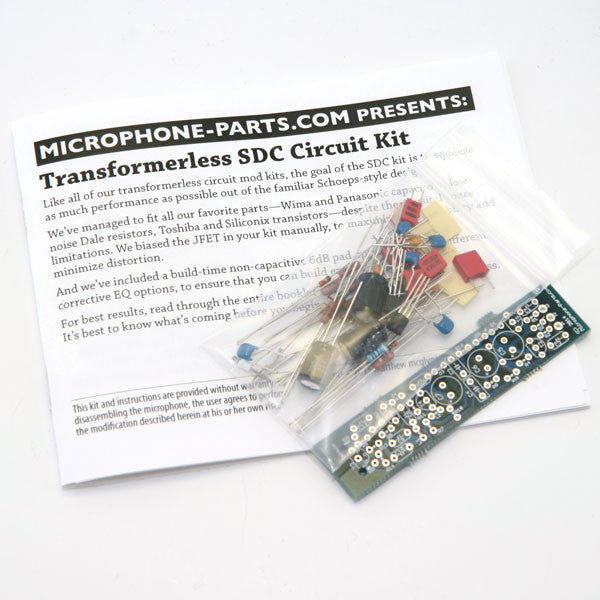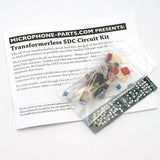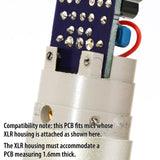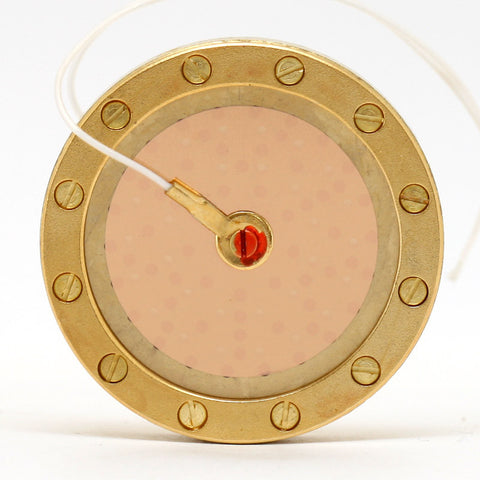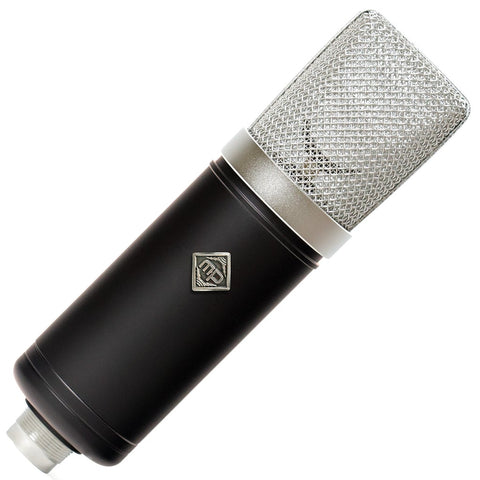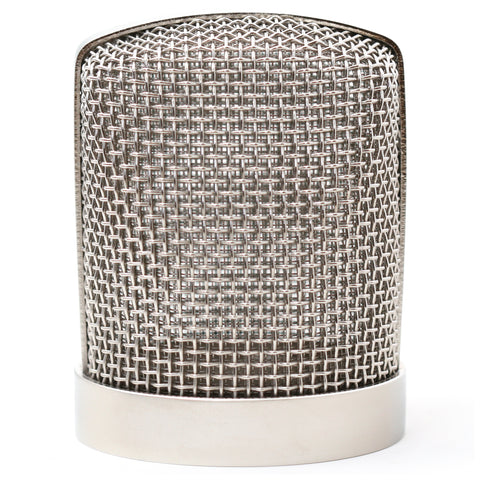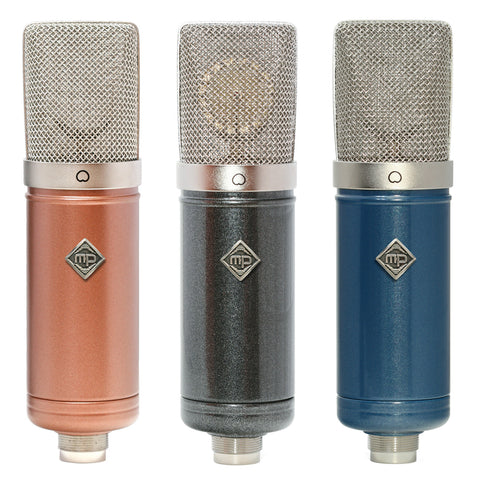Schoeps-style SDC Circuit Kit
$ 109.00 $ 129.00
Transformerless (Schoeps style) SDC circuit kit
This circuit kit contains a full implementation of the renowned Schoeps CMC5 transformerless design, with numerous upgrades and enhancements that we've developed over the years. We use the highest quality parts, including 1% tolerance 50ppm Dale audio resistors, low-noise NOS output transistors, and an individually and manually biased NOS JFET to ensure maximum SPL with minimal distortion.
The finished circuit delivers very low distortion, very high sensitivity, and low self-noise, just like the best pencil mics in the world.
It deserves a new capsule
The circuit performance is world-class. It deserves a fine capsule -- because, after all, the capsule determines about 95% of the sound of the microphone. We strongly recommend our custom SDC capsules, which customers report go head-to-head with Schoeps and Neumann microphones.
Corrective EQ Options
 If your budget requires sticking with a low-cost capsule (meaning, the one that came with your donor microphone) you can use this circuit kit to correct one of its sonic flaws.
If your budget requires sticking with a low-cost capsule (meaning, the one that came with your donor microphone) you can use this circuit kit to correct one of its sonic flaws.
Most of the inexpensive small-diaphragm capsules we've sen exhibit a fairly sharp peak at 16kHz -- as much as a 6dB boost. We've built an EQ option into the circuit, so that you can neutralize the capsule's high-frequency peak within the circuit.
Two optional EQ capacitors are included. Choose the one that makes your mic sound its best. You could use a more aggressive rolloff if you want a darker mic, or a milder rolloff if you prefer a neutral top end. Or, if your capsule sounds good already, build the circuit in "linear" mode and simply enjoy the lower distortion and less cluttered sonic palette provided by the new circuit.
To be clear, if you replace your mic's capsule with one of ours, you won't need this in-circuit EQ. This EQ option exists only to correct the sound of a cheap, hyped capsule.
In the box
Each kit includes:
- Our custom, made-in-the-US two-layer circuit board, designed specifically for DIY with an accessible layout, reasonably sized pads, and thermal cutouts
- 100% of components needed to build the circuit
- Additional parts to create the optional high-frequency shelf EQ, if desired
- a full-color, step-by-step, 32-page build/installation guide, updated in March, 2018
- fast and friendly tech support (via email)
You provide: solder, tools, and a couple hours' time.
Compatibility
 If you are considering buying a cheap MXL donor mic in order to upgrade it with this circuit, we recommend our all-inclusive SDC microphone kit instead, as it delivers a much higher-quality result: superior capsule, superior metalwork, superior circuit.
If you are considering buying a cheap MXL donor mic in order to upgrade it with this circuit, we recommend our all-inclusive SDC microphone kit instead, as it delivers a much higher-quality result: superior capsule, superior metalwork, superior circuit.
This stand-alone kit's circuit board is known to be compatible with most MXL 603S, 840, 991, and 551. Some generations of these microphone employ a very thin circuit board. Ours is a standard thickness for a good quality board: 1.65mm. If your donor mic accommodates only a thinner (e.g. 1.2mm) board, retrofitting ours will require filing of the board and/or microphone housing pieces.
The circuit board is likely compatible with the MXL V67N, but we recommend checking the dimensions of your microphone's stock PCB. See the dimensions of our PCB below.
We believe this board will fit at least some generations of the Monoprice 600700. Compare your mic's PCB dimensions to the numbers below.
This kit is not recommended for the MXL 604. The board will fit, and will function, but your mic body will have a hole in it where the 604's switch used to be. That hole won't cause any problems, but looks odd.
This PCB measures 18.4mm x 80mm, and is 1.64mm thick.
Please measure your mic's PCB, and confirm that the PCB is mounted as pictured on this page, before assuming that this board will fit your donor mic.
This board is not compatible with the CAD GXL1200.
This board is not compatible with the MXL 993.
Skills Required
If you have never built a kit from a PCB before, we recommend getting more soldering experience before you attempt this kit. Although many first-timers have successfully built these kits, our strong preference and recommendation is that you develop your DIY skills on inexpensive "learn to solder" kits first. See the list of our DIY microphone kits, ordered by difficulty, in FAQ #4.

